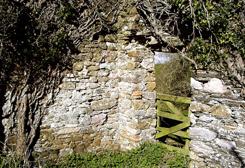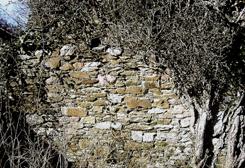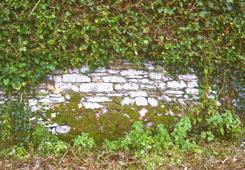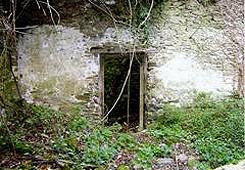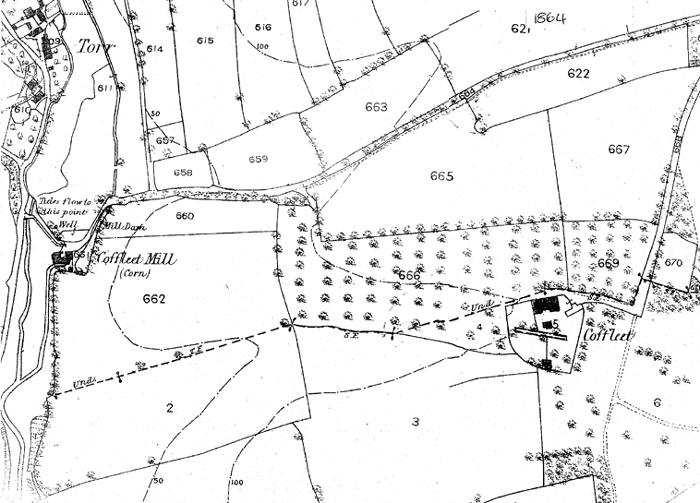Heritage - Cofflete
The following was compiled from a miscellany of records; photography by Samantha Tucker.
|
Cofflete Mill House remains Cofflete Mill House remains |
Vel Cofflete & Winston was held by John de Silveston in 1243. In 1533, it was then held by Robert Hill of Shilston. Later, in 1621, it was sold to Henry Copleston of Bowden. The estate was then passed by him to his daughter, Elizabeth, who married Walter Stert in the mid-seventeenth century. These two had a son, also named Walter who became the Vicar of Cornwood and who married Ultricia Bloodworth. The estate stayed in the Stert Family until it was sold to a wealthy Plymothian lawyer, Thomas Veale. Shortly before the purchase of the estate, Thomas had lost his wife Jenny as well as having children dying in infancy. As a renowned lawyer, it is said that Thomas had many wealthy clients. His wealth made possible the acquisition of Bradley Manor nr. Newton Abbot as well as the manor of Brixton in 1753. Some of his land was received as direct payment for legal work that he had carried out. Thomas had a second marriage to Penelope Hill, daughter of John Hill from Lydcott in Cornwall. However, they married late in life and had no children. This meant that on his death, Thomas had no heir. He left, instead, all his properties to the children of his sister, Charity Lane. Thomas Veale was buried at Yealmpton Church; but no sign of a grave remain, due to later re-building work there. He is, though, remembered by a bust there. Cofflete House seems to have faded from official records by 1861. The Lane family were, by this time, living at Brixton Lodge. The Mill House, despite being in a poor state of repair was shown in the 1901 Census as being rented; this then became Cofflete Cottage. |
from the 1908 Copeland Manuscripts re. Cofflete
'The house, one of the old houses of Brixton has completely disappeared. Its site is pointed out on a low hill, E of the farmhouse, once the Coachman's House. On the hill, the house seems to be represented by a cornfield, W and N of which are old stone walls, joined at the NW angle, and dilapidated in parts. Near the angle, N, is a plain rect. opening. SW are 3 walls of a stone building which seems to have been a small barn. The Coachman's House is a rect. building with a recessed front, E, now inhabited only at its S end, where there is a tall stack. The entrance is in the N side of a S projection. Between the projection 'wings' is a round-headed stone doorway, not unlike the round-headed South Hams type of round arch, but with a narrow and slightly projecting keystone. In a low wall near the doorway to the house, is a small square stone, with a socket in the end of it, square. In the mid-front and N front ground-floor rooms are flat plaster ceilings with the remains of the late moulded plaster cornices. Opposite, is a small rect. stone building, now a wash-house, but perhaps originally a coach-house. The windows in the house are wooden-framed, with wooden lintels. Remains of 'barns', with thick stone walls, to N and E.'
|
The sad ruins of Cofflete itself A doorway at Cofflete |
1864 Map of Cofflete
|

